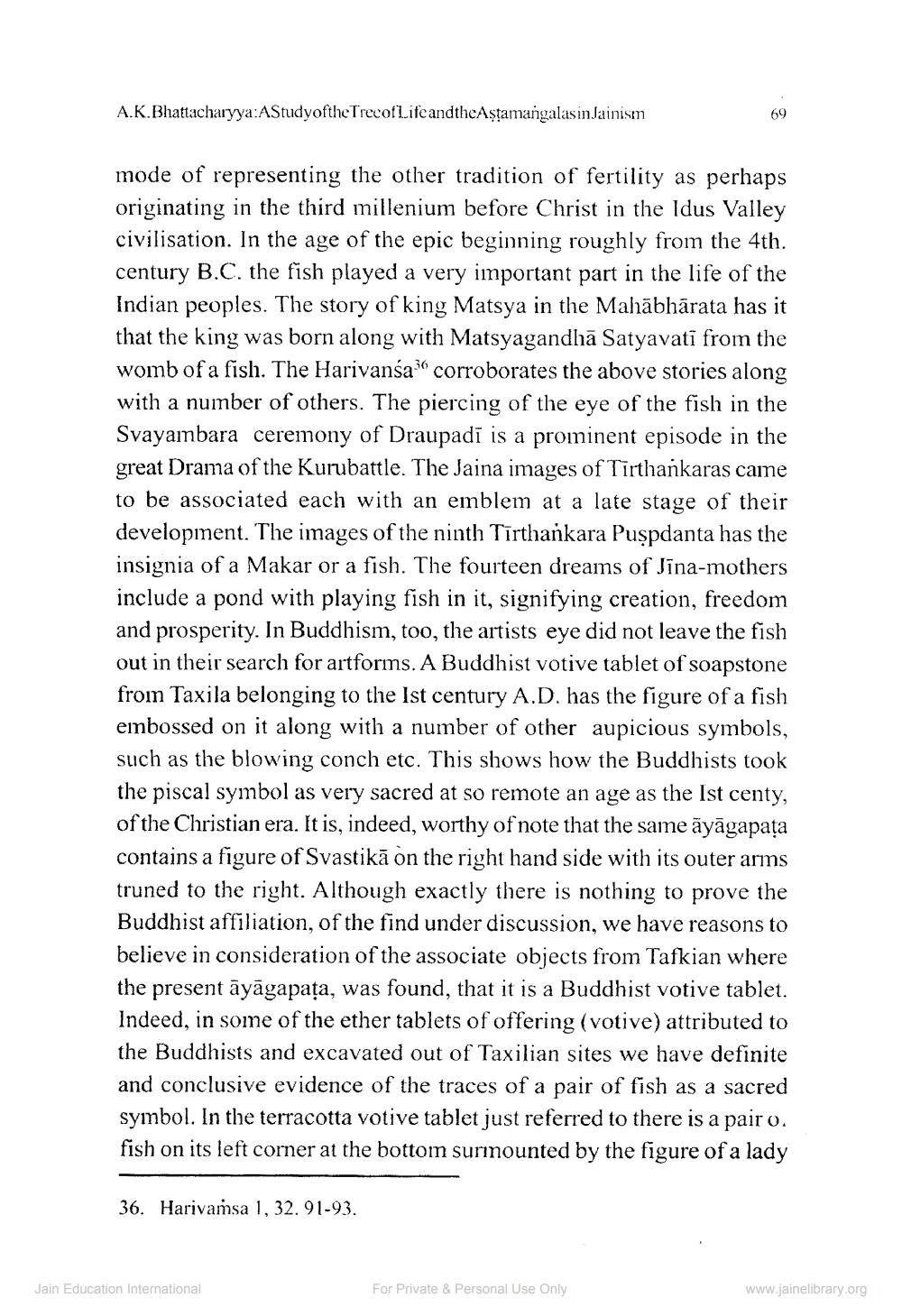________________
A.K.Bhattacharyya:AStudyofthe Treco LifeandtheАstamangalasin Jainism
mode of representing the other tradition of fertility as perhaps originating in the third millenium before Christ in the Idus Valley civilisation. In the age of the epic beginning roughly from the 4th. century B.C. the fish played a very important part in the life of the Indian peoples. The story of king Matsya in the Mahābhārata has it that the king was born along with Matsyagandhā Satyavati from the womb of a fish. The Harivansa." corroborates the above stories along with a number of others. The piercing of the eye of the fish in the Svayambara ceremony of Draupadi is a prominent episode in the great Drama of the Kurubattle. The Jaina images of Tirthankaras came to be associated each with an emblem at a late stage of their development. The images of the ninth Tirthankara Puspdanta has the insignia of a Makar or a fish. The fourteen dreams of Jina-mothers include a pond with playing fish in it, signifying creation, freedom and prosperity. In Buddhism, too, the artists eye did not leave the fish out in their search for artforms. A Buddhist votive tablet of soapstone from Taxila belonging to the Ist century A.D. has the figure of a fish einbossed on it along with a number of other aupicious symb such as the blowing conch etc. This shows how the Buddhists took the piscal symbol as very sacred at so remote an age as the Ist centy, of the Christian era. It is, indeed, worthy of note that the same äyāgapata contains a figure of Svastikā on the right hand side with its outer arms truned to the right. Although exactly there is nothing to prove the Buddhist affiliation, of the find under discussion, we have reasons to believe in consideration of the associate objects from Tafkian where the present āyāgapata, was found, that it is a Buddhist votive tablet Indeed, in some of the ether tablets of offering (votive) attributed to the Buddhists and excavated out of Taxilian sites we have definite and conclusive evidence of the traces of a pair of fish as a sacred symbol. In the terracotta votive tablet just referred to there is a pair o. fish on its left corner at the bottom surinounted by the figure of a lady
36. Harivansa 1, 32.91-93.
Jain Education International
For Private & Personal Use Only
www.jainelibrary.org




